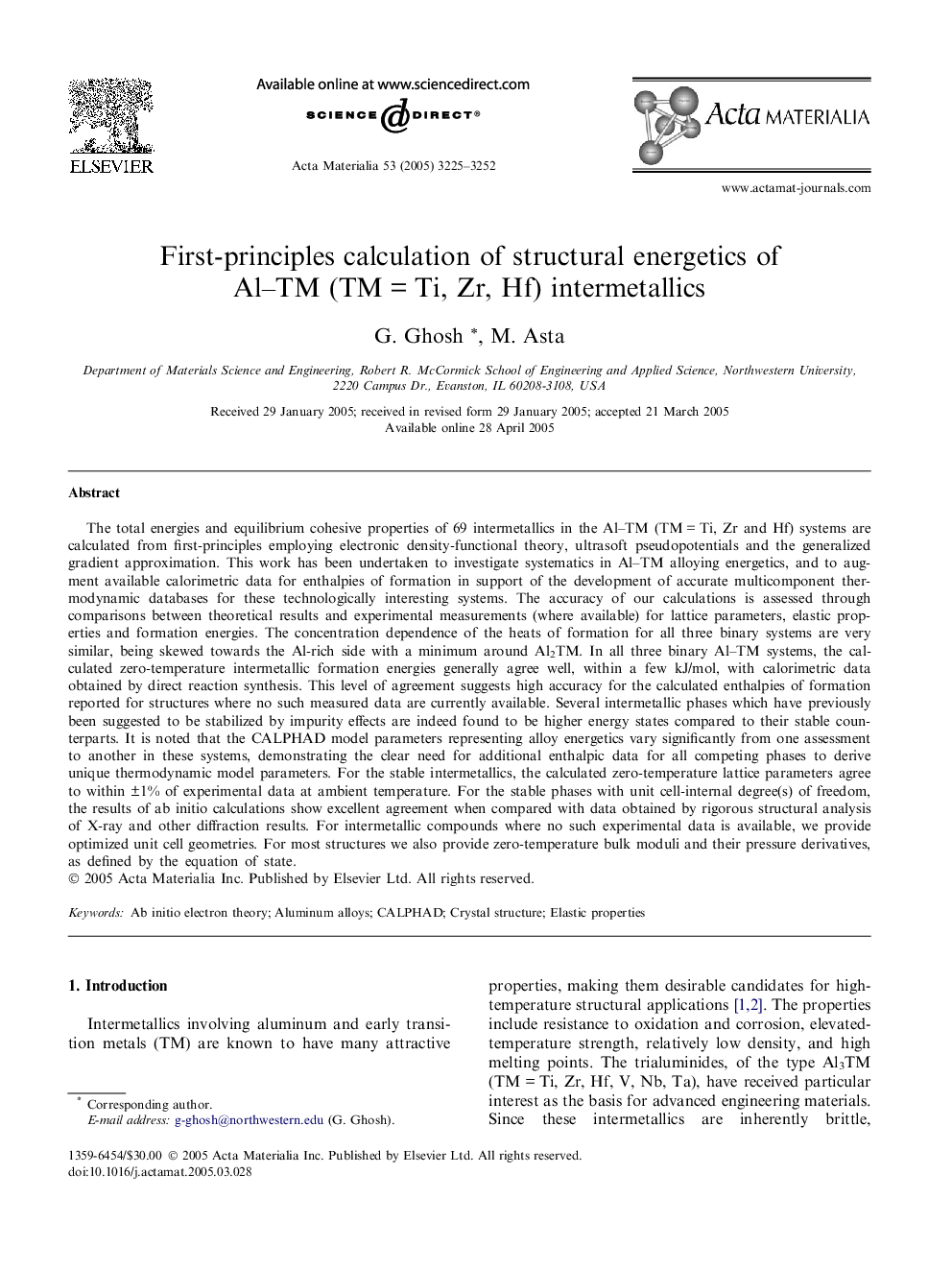| Article ID | Journal | Published Year | Pages | File Type |
|---|---|---|---|---|
| 1451247 | Acta Materialia | 2005 | 28 Pages |
The total energies and equilibrium cohesive properties of 69 intermetallics in the Al–TM (TM = Ti, Zr and Hf) systems are calculated from first-principles employing electronic density-functional theory, ultrasoft pseudopotentials and the generalized gradient approximation. This work has been undertaken to investigate systematics in Al–TM alloying energetics, and to augment available calorimetric data for enthalpies of formation in support of the development of accurate multicomponent thermodynamic databases for these technologically interesting systems. The accuracy of our calculations is assessed through comparisons between theoretical results and experimental measurements (where available) for lattice parameters, elastic properties and formation energies. The concentration dependence of the heats of formation for all three binary systems are very similar, being skewed towards the Al-rich side with a minimum around Al2TM. In all three binary Al–TM systems, the calculated zero-temperature intermetallic formation energies generally agree well, within a few kJ/mol, with calorimetric data obtained by direct reaction synthesis. This level of agreement suggests high accuracy for the calculated enthalpies of formation reported for structures where no such measured data are currently available. Several intermetallic phases which have previously been suggested to be stabilized by impurity effects are indeed found to be higher energy states compared to their stable counterparts. It is noted that the CALPHAD model parameters representing alloy energetics vary significantly from one assessment to another in these systems, demonstrating the clear need for additional enthalpic data for all competing phases to derive unique thermodynamic model parameters. For the stable intermetallics, the calculated zero-temperature lattice parameters agree to within ±1% of experimental data at ambient temperature. For the stable phases with unit cell-internal degree(s) of freedom, the results of ab initio calculations show excellent agreement when compared with data obtained by rigorous structural analysis of X-ray and other diffraction results. For intermetallic compounds where no such experimental data is available, we provide optimized unit cell geometries. For most structures we also provide zero-temperature bulk moduli and their pressure derivatives, as defined by the equation of state.
